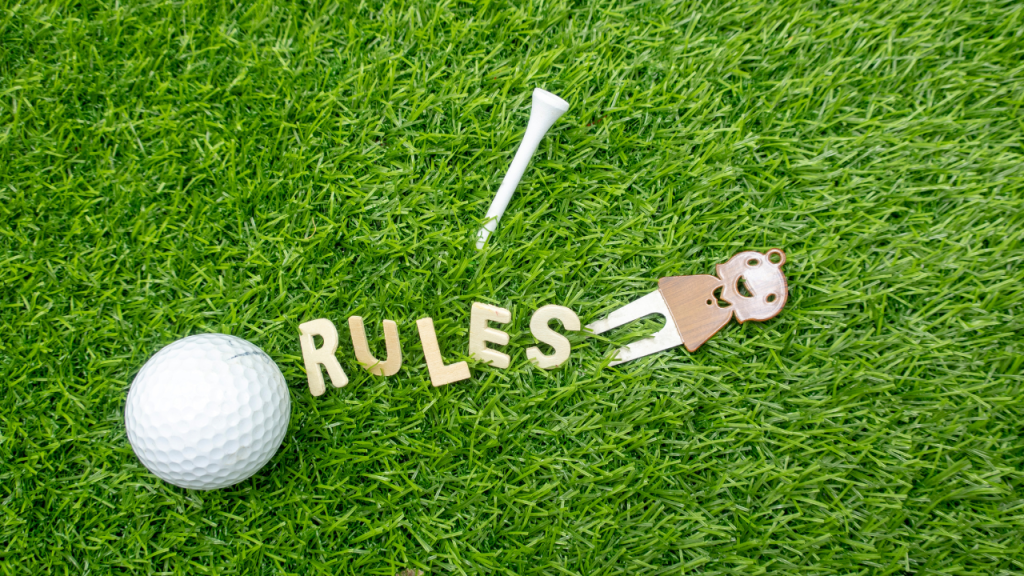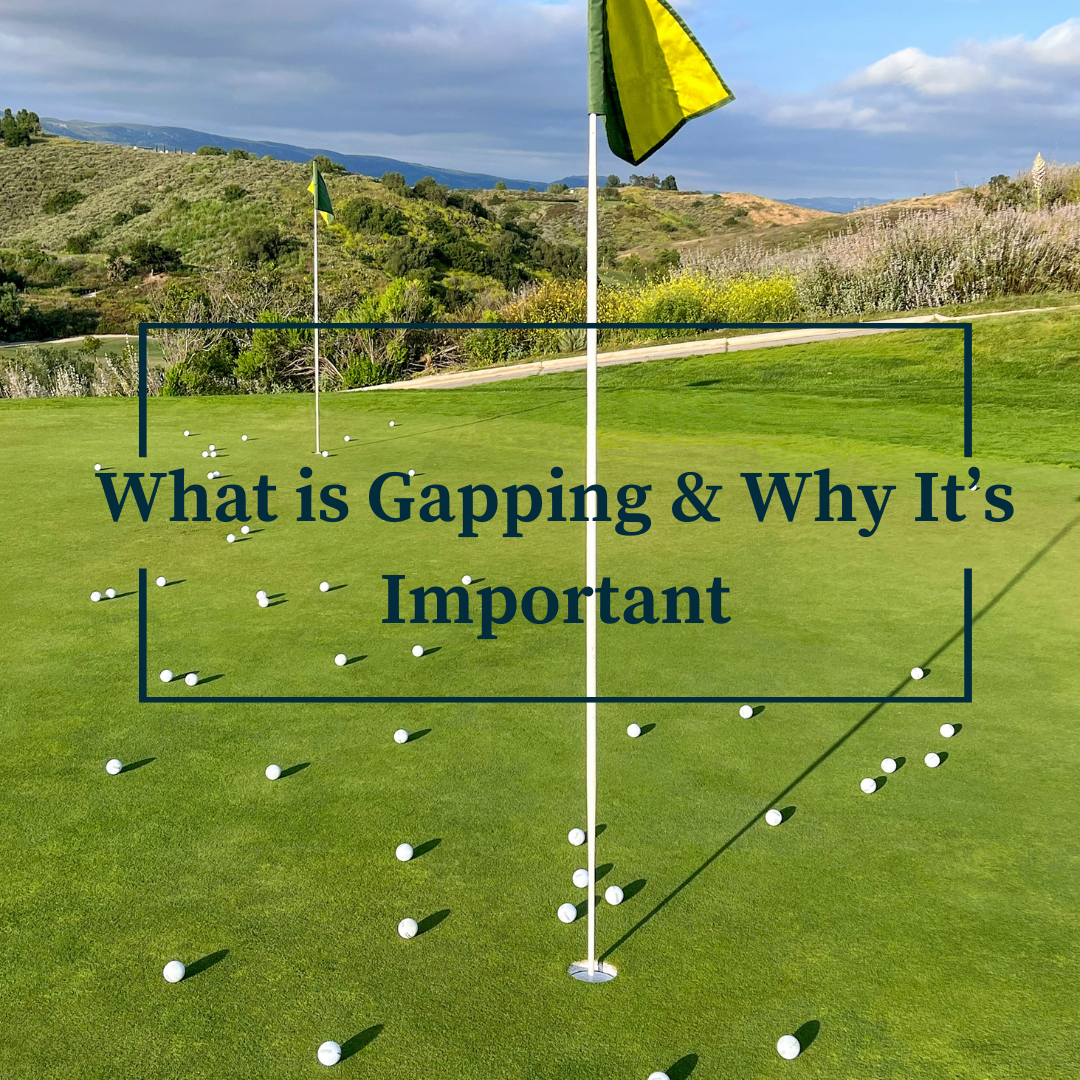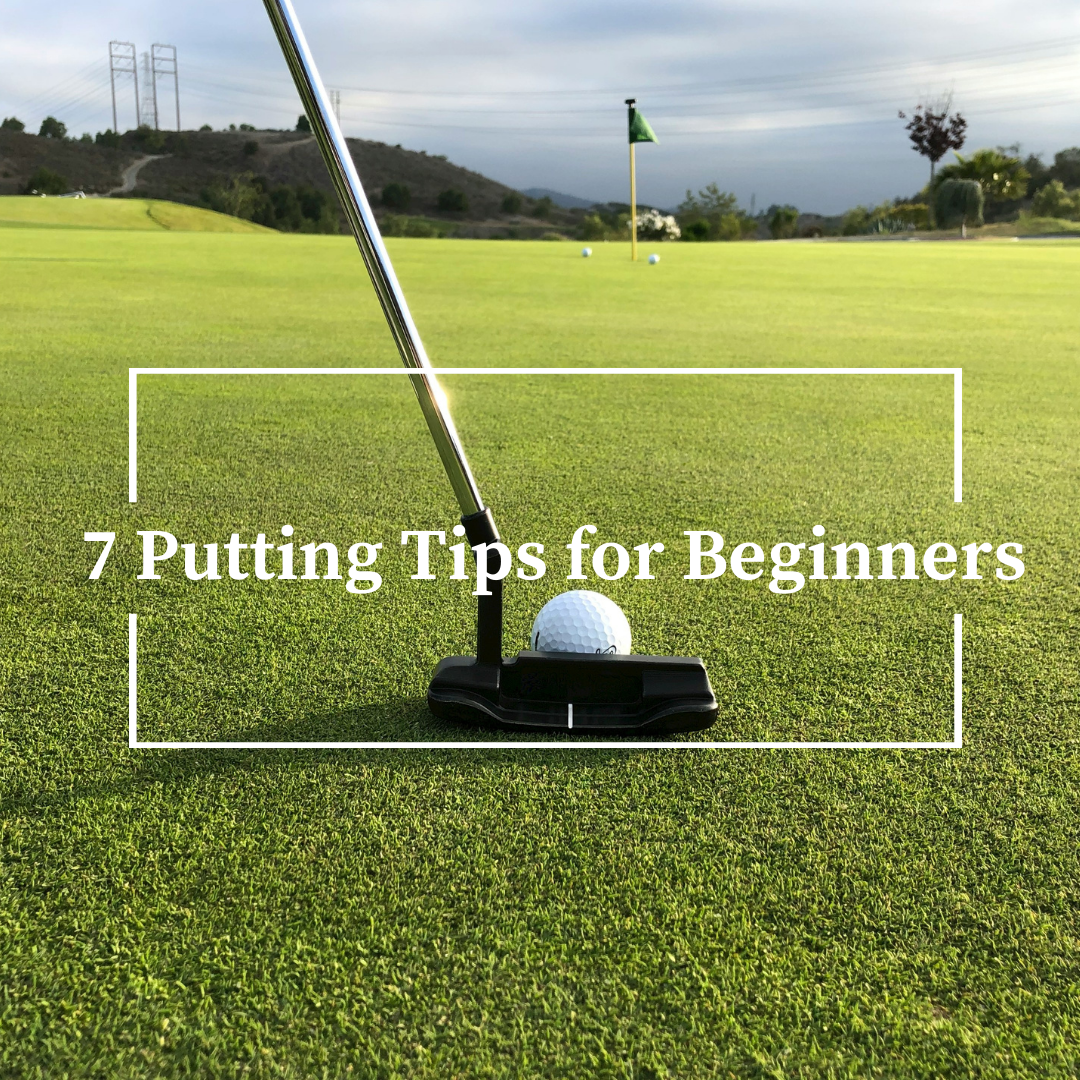Wanting to learn how to play golf? Golf is a fascinating and rewarding sport that has captured the hearts of millions. It offers a balance of physical and mental exercise, and the opportunity to interact with others whilst being out in nature.
As a beginner, stepping into the world of golf may seem overwhelming at first, but don’t worry! This article will guide you through the fundamentals of golf:
- the equipment you’ll need;
- the basic golf rules and etiquette; and
- the fundamentals of a good golf swing
Golf Equipment

As a beginner golfer, you’ll need some essential equipment to start playing. These items include golf clubs, golf balls, a golf bag, golf shoes, a golf glove, and golf tees. Below is a guide to help you choose the right equipment for your skill level, budget, and preferences.
Golf Clubs
As a beginner, it’s essential to understand the types of golf clubs and how to use them. There are four main types of clubs: drivers, irons, hybrids, and putters.
Drivers are generally used for long-distance shots off the tee. They have larger clubheads and are designed for maximum distance from the tee.
Irons come in various numbers, ranging from 3-iron to 9-iron. The lower the number, the longer the club and less loft it has. This means a 3-iron will fly farther but with less height than a 9-iron. Factors like distance to the hole, wind and course conditions will help you decide which iron to select for each shot. For example, if you have 150 yards to the hole and there’s no wind, an 8-iron might be a good choice.
Hybrids are a mix between irons and woods, designed to replace the long irons (2, 3, and 4). They are easier to hit than long irons due to their larger clubheads and shorter shafts. Consider using a hybrid when you need distance and accuracy from the fairway or rough.
Putters are used on the green.
When deciding which club to use, factors like distance, wind, and course conditions should be considered. Here’s a simple breakdown to help select the right club for each shot:
- Driver: Off the tee on long par 4s and par 5s
- Long irons (3-4) or hybrids: For long approach shots and layups (including off the tee)
- Mid irons (5-7): For medium-distance approach shots
- Short irons (8-9): For short approach shots
- Pitching wedge: For approach shots and chipping around the green
- Putter: On the green
It’s common for beginners to make mistakes, such as using too many clubs or choosing the wrong one. So, it’s better when starting out to use a reduced set than to carry a full set. Start by selecting a few essential clubs:
- Driver (optional)
- 3 & 5 wood
- 5 hybrid
- 6 iron-pitching wedge
- Sand wedge, and
- Putter
Build your golf bag as you improve. With practice, you’ll become more skilled at choosing the right club and mastering your swing for each shot. Find out more on what clubs you should have in your golf bag.
Golf Balls
There are various types of golf balls:
- Distance balls: Designed for maximum distance, but less control and feel
- Spin balls: Generate more spin, allowing for better control around the greens
- Control balls: Offer a balance of distance and spin characteristics
- Soft balls: Provide more feel but typically sacrifice distance
When selecting golf balls, consider your skill level and preferences. As a beginner, you might want to start with distance or soft balls for easier playability.
Golf Bags
Are essential for carrying your clubs, balls, and other accessories. Look for something lightweight and easy to carry or choose a cart bag if you prefer using a pushcart or golf cart. Make sure it has ample storage and compartments for your needs.
Golf Shoes
Provides the necessary stability and traction to help you maintain proper footing while swinging the club. Most golf shoes have either spiked or spikeless designs, so pick whatever feels most comfortable to you.
Golf Gloves
Are typically worn on your non-dominant hand, they help improve your grip. Opt for a glove that fits snugly & comfortably.
The Rules of Golf

As a beginner golfer, it’s important to know and learn the basic rules of golf. The objective of golf is to get your ball from the tee to the green and into the hole using as few shots as possible. A standard course consists of 18 holes, with each hole having a predetermined par score, which is the number of ideal strokes to complete the hole.
There are different terms used to describe your score based on the par for each hole:
- Bogie: One stroke over par
- Double Bogey: Two strokes over par
- Triple Bogey: Three strokes over par
- Birdie: One stroke under par
- Eagle: Two strokes under par
While playing golf, you need to adhere to certain rules to maintain a harmonious and fair game.
Some basic rules include:
- You can carry a maximum of 14 clubs in your bag during a round of golf.
- Out of bounds areas and hazards (e.g., water, sand) are designated as penalty areas. Specific rules apply for dealing with balls landing in these areas.
- In case of a lost ball or unplayable lie, a penalty stroke is added to your score. You may need to play a new ball from your previous position or other specific relief areas.
The rules of golf can be categorized into specific types such as:
- Stroke Play Rules: How to count your score, with the player having the lowest total strokes at the end of the round being the winner.
- Match Play Rules: How to compete against another player, where the game is scored by the number of holes won instead of total strokes.
- Etiquette Rules: How to behave on the course, which includes not making excessive noise, respecting the pace of play, fixing divots and ball marks, and not standing in a player’s line of sight during their swing.
- Penalty Rules: How to deal with violations or infractions, like playing a wrong ball or grounding the club in a hazard.
It’s essential to familiarize yourself with these rules. For example, suppose your ball lands in a water hazard. In that case, you can choose to drop a new ball behind the hazard and take a penalty stroke or follow other specific relief options depending on the type of hazard.
Golf Etiquette

Golf etiquette is a set of unwritten rules that help maintain the integrity and enjoyment of the game. As a beginner golfer, it’s essential for you to learn and respect golf etiquette. This ensures the smooth flow of the game and establish a sense of camaraderie with fellow golfers.
Some of the key aspects of golf etiquette are:
Pace of Play
Maintain an appropriate pace of play. If your group is playing slower, let the group behind you “play through” to avoid holding them up.
Some tips to keep good pace on the golf course:
- Play ready golf
- Lost ball – spend no more than 3 minutes searching for the ball & hit a provisional if you think the ball is lost
- Staying with the group in front of you
- Stay off your phone
- Leave your golf bag between the green and the next hole
Replace or Repair Divots
All golfers should leave the course as they found it. If divots are made on the fairway or green make sure your replace or repair them. This also help others on the course and shows courtesy to other players. There is nothing worse hitting a great shot and the ball ending up in someone else’s divot.
Dress Appropriately
There is a dress code when you play golf and if you do not align with the dress code of the course. They may not allow you to play.
To be safe always check on the courses website to see the dress code of the course. To be safe, always wear the following:
- Golf or collared shirt (tucked-in)
- knee high shorts or long trousers (men)
- Skirts or slacks (women)
Etiquette gone wrong
Some examples of bad golf etiquette that you should avoid on the course:
- Slow play: Taking too long to hit your shot can slow down the pace for everyone on the course.
- Cheating: Lying about your score or moving your ball can cause frustration and tension among fellow golfers.
- Throwing clubs: Showing anger or frustration by throwing your clubs can be disruptive and create an uncomfortable atmosphere.
- Walking on someone’s line: Be mindful of the path between another golfer’s ball and the hole, and try not to walk over it.
- Giving unsolicited advice: Refrain from telling other golfers how to play unless specifically asked for assistance.
Golf etiquette creates a pleasant golfing environment and shows your respect for the game and fellow golfers.
Golf Swing Basics

Learning how to play golf involves mastering one of the most important skills for any golfer – the golf swing. In this section, we’ll cover the fundamentals of a good golf swing, focusing on grip, aim, and stance.
Grip
A proper golf grip is the foundation upon which your golf swing is built and getting it right will make a huge difference in your game. The grip controls the clubface during your swing and will help you achieve consistency in the direction and distance of your shot.
The key steps of getting your grip setup are:
- When holding the club, it should be sitting at the base of your little finger to the middle of our index finger
- Wrap your fingers on your left hand around the grip and place your left hand on top of the shaft
- Your right hand connects with your left hand from your index finger knuckle to the base of your palm
- Wrap your fingers around and place the squishy part of your right hand over your left thumb
- The “V” shapes created between your thumb and index finger on both hands should point towards your back shoulder
There are various types of grips, such as the overlapping, interlocking, and ten-finger grip. The most common grips are the overlap or interlock grip. So, as a beginner it would be wise to start with either of these 2 grips as they will give you greater control and stability over the club and swing.
Check out how to grip a golf club for more in-depth information.
Aim
Proper aiming is essential for any golfer to hit the ball in the desired direction. If a golfer does not know how to aim, it will make it hard to play consistent golf. Key steps to get the aim right:
- Assess the target: identify a target or specific landing area of where you want to hit your ball
- Stand behind the ball: Step back and position yourself behind the ball to get clear in your mind on where you are aiming
- Pick a Spot: From a direct line from your target to the ball, pick a spot closer on the target line. It may be a divot, tree, or patch of grass. This spot will serve as your intermediate target and help you align your shot
- Align your clubhead: put your clubhead behind the ball and aim it at the intermediate target
- Align your feet: Position your feet parallel to the target line. The alignment of your clubhead and feet ensures your body is aiming at your target
Stance
A stance sets the foundation for a balanced and powerful swing. Key steps to follow:
- Start by standing with your feet shoulder-width apart and your knees slightly bent.
- Tilt your upper body forward from your hips, keeping your back straight and your weight centered between your feet.
- Your arms should hang down naturally, allowing for a comfortable distance between your hands and your body.
By focusing on these three fundamental elements – grip, aim, and stance – you can develop a solid foundation for an effective golf swing. Make sure to practice regularly and consider getting golf lessons to help you refine your golf swing. Remember, golf is hard and it requires patience and persistence, but with the right approach and dedication, your skills will undoubtedly improve.
Final Thoughts
I hope this guide has equipped you with the essential knowledge and insights to start your golfing journey.
As you prepare to tee off on your golfing adventure, remember that golf is more than just a game; it’s a captivating blend of precision, strategy, and camaraderie. Here’s a quick recap of what we’ve covered:
- Golf Equipment: Your clubs, balls, bag, shoes, glove, and tees are your trusted companions on the course. Choose them wisely to suit your needs and budget. Start with a core set of clubs, and expand your collection as you progress.
- The Rules of Golf: Understanding the rules is vital for fair play and ensures you can navigate any course with confidence. Knowing the basic golf rules will enhance your golfing experience.
- Golf Etiquette: Golf etiquette is the glue that holds the game together. It’s about respecting your fellow golfers and the course. Embracing good etiquette ensures that everyone enjoys their time on the fairways.
- Golf Swing Basics: Your swing is the heart of your game. Learn the fundamentals in your grip, aim and stance and these will hold you in good stead.
As you embark on your golfing journey, remember that improvement comes with practice and patience. Don’t be disheartened by early challenges; every golfer, from novice to pro, faces them. Seek guidance from golf professionals through golf lessons to refine and improve your skills.
Frequently Asked Questions
How do I improve my golf skills and lower my handicap?
To improve your golf skills and lower your handicap, consider taking lessons from a certified golf instructor. They can help identify areas of improvement and develop a personalized plan for your practice. Additionally, it’s essential to practice regularly, focus on short game fundamentals, and maintain your mental game.
How do I improve my golf skills and lower my handicap?
To improve your golf skills and lower your handicap, consider taking lessons from a certified golf instructor. They can help identify areas of improvement and develop a personalized plan for your practice. Additionally, it’s essential to practice regularly, focus on short game fundamentals, and maintain your mental game.
How do I keep score in golf?
In golf, the objective is to complete each hole in the fewest number of strokes. Your score is the total number of strokes it takes you to complete the course. Record the number of strokes for each hole, and at the end of the round, add them up for your final score.
How do I get started playing golf?
To get started playing golf, invest in a basic set of clubs, attend a beginner golf clinic or take lessons from a certified golf professional. Be sure to practice at driving ranges and putting greens to develop your skills. As you gain experience and become more serious about the game, transition to playing on a golf course.
How do I clean & maintain my golf equipment?
Regularly clean your golf clubs by using a soft brush, mild dish soap, and warm water. Scrub the grooves to remove dirt and dry the clubs with a clean towel. For golf balls, simply wipe them with a damp cloth. Store your equipment in a dry, cool place to prevent damage and wear. For more information, check out how to clean golf clubs.
Where can I play golf?
You can play golf at various courses, practice facilities, and even indoor golf centers. Look for local public courses, country clubs, or search online for golf courses in your area. Practice ranges and indoor simulators are also suitable options for improving your game or playing during bad weather.
What are some common golf terms and slang that I should know?
Familiarizing yourself with golf terminology will help you feel more comfortable on the course. Key terms you should know include:
• birdie (one stroke below par)
• bogey (one stroke above par)
• bunker (sand trap)
• fairway (the area between the tee and green)
• fore: used to warn others of an approaching ball
• mulligan: an informal term for a do-over






